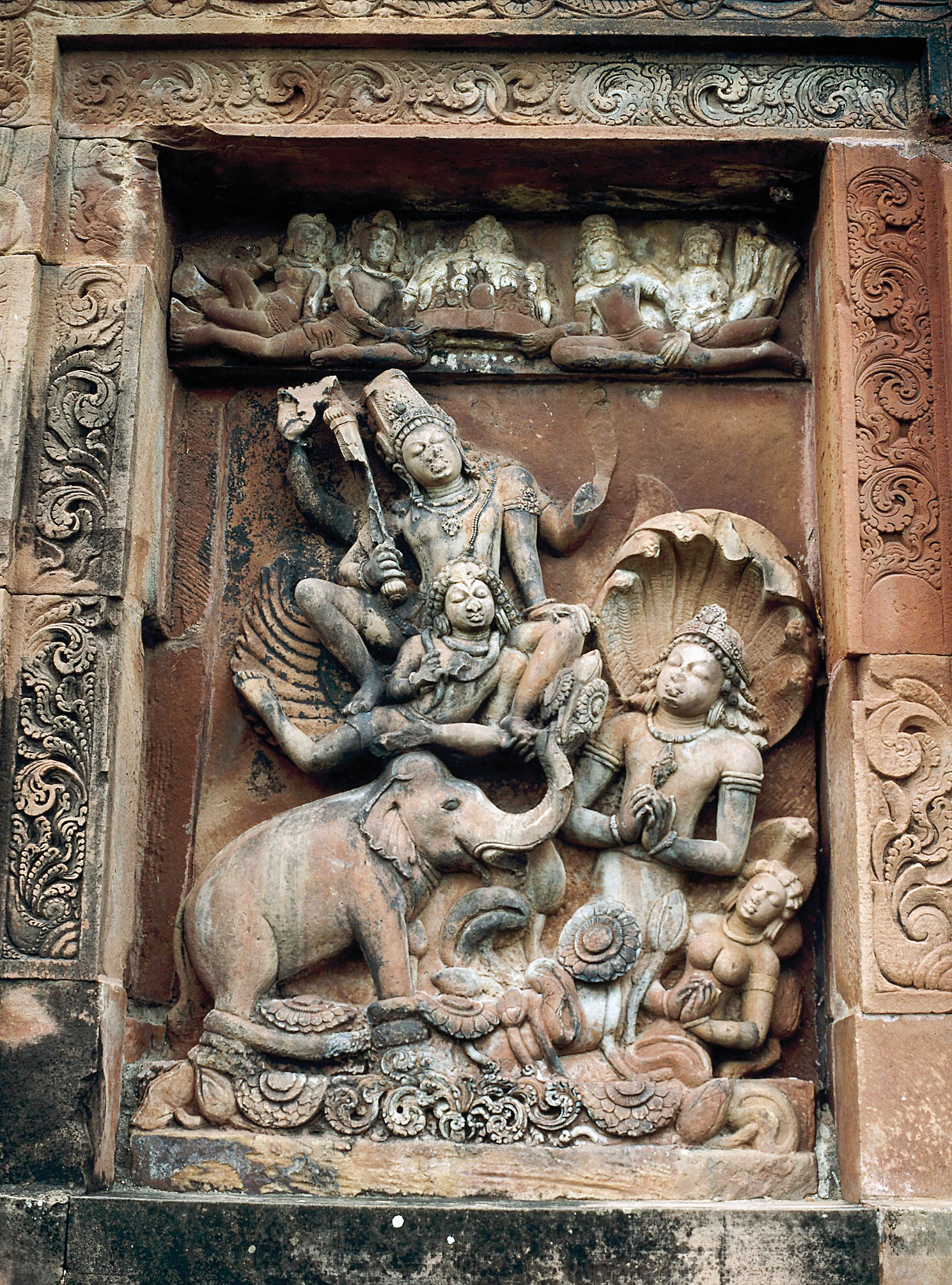A History of World Societies:
Printed Page 77
A History of World Societies Value
Edition: Printed Page 74
Hinduism
Both Buddhism and Jainism were direct challenges to the old Brahmanic religion. Both rejected animal sacrifice, which by then was a central element in the rituals performed by Brahmin priests. Even more important, both religions tacitly rejected the caste system, accepting people of any caste into their ranks. Over the next several centuries (ca. 400 B.C.E.–200 C.E.), in response to this challenge, the Brahmanic religion evolved in a more devotional direction, developing into the religion commonly called Hinduism. In Hinduism Brahmins retained their high social status, but it became possible for individual worshippers to have more direct contact with the gods, showing their devotion without using priests as intermediaries.
The bedrock of Hinduism is the belief that the Vedas are sacred revelations and that a specific caste system is implicitly prescribed in them. Hinduism is a guide to life, the goal of which is to reach union with brahman, the unchanging ultimate reality. There are four steps in this search, progressing from study of the Vedas in youth to complete asceticism in old age. In their quest for brahman, people are to observe dharma (DAHR-

Hinduism assumes that there are innumerable legitimate ways of worshipping brahman, including devotion to personal gods. After the third century B.C.E. Hinduism began to emphasize the roles and personalities of thousands of powerful gods. Brahma, the creator; Shiva, the cosmic dancer who both creates and destroys; and Vishnu, the preserver and sustainer of creation, were three of the main male deities. Important female deities included Lakshmi, goddess of wealth, and Saraswati, goddess of learning and music. These gods were usually represented by images, either small ones in homes or larger ones in temples. People could show devotion to their personal gods by reciting hymns or scriptures and by making offerings of food or flowers before these images. A worshipper’s devotion to one god did not entail denial of other deities; ultimately all were manifestations of brahman, the ultimate reality. Hinduism’s embrace of a large pantheon of gods enabled it to incorporate new sects, doctrines, beliefs, rites, and deities.
A central ethical text of Hinduism is the Bhagavad Gita (BAH-
You grieve for those beyond grief,
and you speak words of insight;
but learned men do not grieve
for the dead or the living.
Never have I not existed,
nor you, nor these kings;
and never in the future
shall we cease to exist.
Just as the embodied self
enters childhood, youth, and old age,
so does it enter another body;
this does not confound a steadfast man.
Contacts with matter make us feel
heat and cold, pleasure and pain.
Arjuna, you must learn to endure
fleeting things — they come and go!
When these cannot torment a man,
when suffering and joy are equal
for him and he has courage,
he is fit for immortality.
Nothing of nonbeing comes to be,
nor does being cease to exist;
the boundary between these two
is seen by men who see reality.
Indestructible is the presence
that pervades all this;
no one can destroy
this unchanging reality.
Our bodies are known to end,
but the embodied self is enduring,
indestructible, and immeasurable;
therefore, Arjuna, fight the battle!
He who thinks this self a killer
and he who thinks it killed,
both fail to understand;
it does not kill, nor is it killed.
It is not born,
it does not die;
having been,
it will never not be;
unborn, enduring,
constant, and primordial,
it is not killed
when the body is killed.2
Krishna then clarifies the relationship between human reality and the eternal spirit. He explains compassionately to Arjuna the duty to act — to live in the world and carry out his duties as a warrior. Indeed, the Bhagavad Gita emphasizes the necessity of action, which is essential for the welfare of the world. For Arjuna the warrior’s duty is to wage war in compliance with his dharma. Only those who live within the divine law without complaint will be released from rebirth. One person’s dharma may be different from another’s, but both individuals must follow their own dharmas.
Hinduism provided a complex and sophisticated philosophy of life and a religion of enormous emotional appeal that was attractive to ordinary Indians. Over time it grew to be the most common religion in India. Hinduism validated the caste system, adding to the stability of everyday village life, since people all knew where they stood in society. Hinduism also inspired the preservation of literary masterpieces in Sanskrit and the major regional languages of India. Among these are the Puranas, which are stories of the gods and great warrior clans, and the Mahabharata and Ramayana, which are verse epics of India’s early kings.